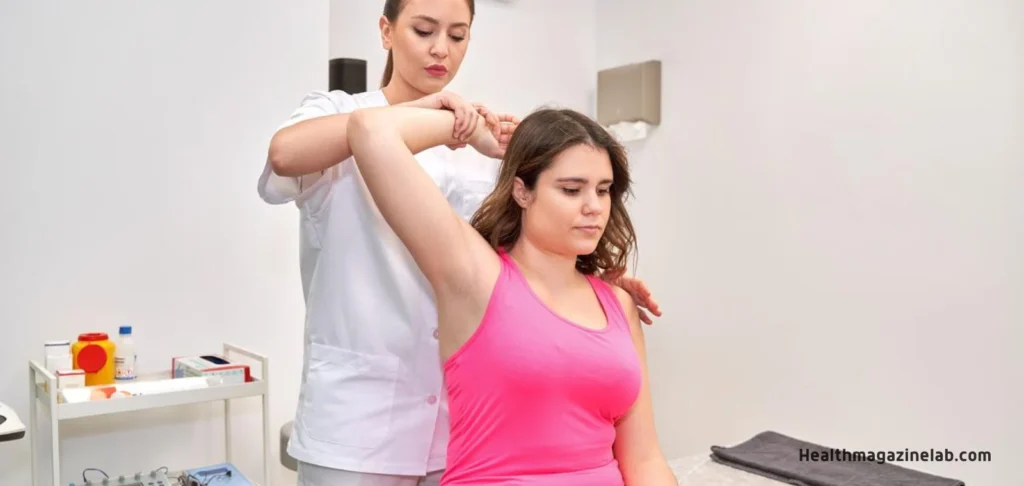Wondering what treatment modalities is? Modality treatment is simply a therapy approach, and the treatment options include, for example, surgery and chemotherapy.
Individual therapy, group therapy, couples therapy, and family therapy are the most popular modalities or contexts through which psychological treatments are delivered.
How Does Modality Therapy Work

Psychotherapeutic treatments can take place in a variety of settings or methods. The most prevalent types of treatment include individual therapy, group therapy, couples therapy, and family therapy.
A client works one-on-one with a qualified therapist during a personal therapy session.
Let’s look at some examples of treatment modalities examples. Luxury Addiction Treatment Center can be an excellent option for modality therapy.
Individual Therapy

In individual therapy, the client and clinician meet one-on-one (usually for 45 minutes to an hour).
These meetings typically occur weekly or every other week and sessions are conducted in a confidential and caring environment. Clinical treatment modalities work well for those who are interested in individual therapy.
Group Therapy

A clinician meets with multiple clients who have similar concerns in group therapy. One advantage of group therapy is that it can make clients feel less ashamed and alone.
Clinicians strive to ensure that everyone benefits from a group setting and that no one individual is the only focus of the session.
Groups can be structured in various ways, including those with an overarching topic or goal, those with a time restriction, those with open membership, and those with a closed membership. This can be a complex and emotional process and a chance for personal growth.
Couples Therapy

Treatment modalities in counseling are ideal for couples. It consists of two individuals in an intimate relationship attempting to tackle their difficulties.
Cognitive-behavioral therapy is the most common therapeutic approach utilized in couples counseling.
Therapy session with family
Family therapy is a group therapy that consists of one or more families. The systems approach is one of family therapy’s most prevalent theoretical approaches.
This strategy aims to help each family member grow and the family as a whole. These are some other Key pointers to be followed
1. Hospitalization for inpatients
Treatment occurs within a hospital providing 24-hour care and observation. In many states, a person can be confined to an inpatient hospital for observation and assessment lasting 48 or 72 hours.
2. Treatment center at your home
A residential treatment center (RTC) is a live-in national healthcare institution that provides rehabilitation for drug misuse, mental illness, or other behavioural issues.
Some RTCs are lock-down facilities, meaning residents are confined to the facility. Others are relationally focused, with an emphasis on community and interpersonal interactions.
3. Forensic Support and Care
Forensic psychiatric units represent a blend of criminal justice and mental health treatment environments. Individuals are sent to these units by the court system, and the unit is frequently stand-alone.
The focus of both psychiatric and psychological care is to enable defendants to be returned to the criminal justice system to stand trial. Some individuals are receiving treatment to restore their legal competence.
4. Care for outpatients
This is the “default” setting for most people with mental illnesses. It can comprise a variety of treatment techniques that the client often chooses; however, some may be court-ordered, particularly for those with minor criminal crimes or drug accusations.
Some Common Modality Therapies

CBT or Cognitive Behavioral Therapy
Cognitive behaviour therapy (CBT) focuses on altering one’s thought processes. A therapist and client, for example, may collaborate to identify beliefs that are detrimental to the patient’s mental health and replace them with healthy alternatives.
Treatment Approach
This treatment approach is most effective for self-esteem issues, obsessive-compulsive disorder (OCD), anxiety and depression, and other disorders that produce or are founded on negative thinking patterns.
Stimulation with Electrical
Stimulation is typically used to modulate pain by stimulating cutaneous sensory nerves. Endogenous opioids are released when A-delta and C fibers are produced, resulting in prolonged activation of descending analgesic pathways.
Some other things to keep in mind
To allow current to flow deeper, electrodes should be positioned at least one inch apart – at least one inch apart for pain management. Skin, bone, and necrotic tissue have considerable resistance to electrical current.
Electrodes should not be put directly over bony prominences. Increasing the degree of pain does not address the source of pain; instead, it causes an electrical feeling, a motor reaction, and unpleasant stimuli.
Feedback through Biological Aspects
Biofeedback employs real-time visual, tactile, and aural input to improve control of bodily functions and, as a result, patient performance. There are several varieties of biofeedback, with different uses in the therapeutic situation.
As a procedure, it is widely regarded as safe, with no absolute contraindications. However, to actively engage in the system, the patient must be able to grasp and follow directions.
EMDR (Eye Movement Desensitization and Reprocessing)
EMDR is an abbreviation for Eye Movement Desensitization and Reprocessing. This type of treatment is commonly used to treat post-traumatic stress disorder.
EMDR is a type of treatment that is commonly used to treat post-traumatic stress disorder. During a session, the patient recalls a horrific incident while moving their eyes in a precise pattern, guided by the therapist. This can assist the patient in coping with the stress of the incident.
Expressive Arts Therapy/Art Therapy
Art therapy and other expressive arts treatments employ art approaches to assist patients in understanding and processing their ideas and feelings. This technique does not require any creative expertise or talent on the part of the patient.
Measures to be taken before Modality Therapy
Respondents in the NSDUH were asked if they had had mental health therapy or counselling. Medicine was deemed sufficient if either medication or counseling was assessed as helping some, a lot, or significantly.
Respondents also indicated what best defined their entry into care. Sex, race/ethnicity, age category, habitation size (big metro, small metro, nonmetro), and education are sociodemographic variables.
Therapeutic Modalities
The delivery of thermal, mechanical, electromagnetic, and light energy for therapeutic reasons is referred to as therapeutic modalities. Physiotherapists frequently employ them to assist their patients/clients in achieving therapeutic goals.
Some measures are taken before evaluating a therapeutic modality. They are,
- Iontophoresis (electrical stimulation)
- Biofeedback
- Thermotherapy (superficial or deep)
- Cryotherapy
- Phonophoresis using ultrasound
- Shockwave Extracorporeal Therapy (ESWT)
- Laser treatment
- The use of magnetic treatment
- Massage
- Traction through mechanical means
While there is some evidence that various modalities may assist different individuals. It is indicated that they should not be utilized as a stand-alone treatment.
The terms “therapeutic modalities” and “electrophysical agents” are sometimes used interchangeably to describe all interventions with physiological therapeutic effects.
Laser treatment

Light Amplification for Stimulated Emission of Radiation (LASER) uses electromagnetic radiant energy generated by moving photons across space.
Low-power or cool lasers have little or no thermal effects, but they have a considerable influence on soft-tissue and fracture healing, as well as pain management.
Enzymes, haemoglobin, fibroblasts, and neural tissue rapidly absorb light at the wavelengths used in laser treatment.
Laser has been proven to trigger cell degranulation, releasing potent inflammatory mediators.
Some studies have found that laser treatment reduces oedema caused by inflammation. Endothelial cell proliferation and enhanced microcirculation are the results of haemoglobin absorption.
Low doses also result in a dramatically reduced sensory nerve conduction velocity impact on pain reduction.
Modality Therapy also offers Cryotherapy!
Ice massage, cold hydro collator packs, cold whirlpool, cold spray, contrast baths, ice immersion, cold compression, and cryokinetics are all forms of cryotherapy.
Cold’s direct physiological impacts include Vasoconstriction and a reduction in blood flow within the first 15 – 20 minutes.
Oedema is less likely to develop when the local blood supply is restricted. Slower metabolism produces fewer inflammatory mediators, minimizes oedema development, and lowers oxygen demand in tissues, reducing the likelihood of future ischemia damage.
Cold reduces local neural activity, elevates the threshold stimulation of muscle spindles, and reduces the excitability of free nerve terminals, resulting in a higher pain threshold and decreased muscular spasm.
Ultrasound facility
Ice massage, cold hydro collator packs, cold whirlpool, cold spray, contrast baths, ice immersion, cold compression, and cryokinetics are all forms of cryotherapy.
Cold’s direct physiological impacts include Vasoconstriction and reduced blood flow within the first 15 – 20 minutes, reduced metabolic rate. And Pain alleviation with reduced muscle spasm and nerve conduction velocity through the gate-control mechanism.
Edema is less likely to develop when the local blood supply is restricted. Slower metabolism produces fewer inflammatory mediators, minimizes edema development, and lowers oxygen demand in tissues, reducing the likelihood of future ischemia damage.
Modality using Magnets
Magnetic treatment is a therapy in which the body is subjected to a specific type of energy, such as a low-frequency magnetic field. When subjected to magnetic fields, bodily tissues generate a small electrical current.
Impact of Modality on Mental Health
Patients who receive both medication and counseling are more likely to perceive treatment as practical. Being 26 years or older is associated with greater odds of perceived effectiveness of drugs for depression.
Jason Shiers is one of the most renowned in this field. He can help you through this mental process,
Being employed may indicate access to resources that might shape expectations of treatment.
More research is needed to understand why mental health insurance increases perceived effectiveness among persons who received counseling. But not among those who received
Counseling and medication
Medications can help with depression but often have less desirable effects for people with substance use disorders due to antidepressant and substance interactions.
Conclusion
Various treatment methods for people suffering from mental illnesses are described as a treatment of modality in mental health.
The words “treatment modality” and “treatment strategy” or “treatment kind” are synonymous. So, we should all consider a modality excessive at least once in our lifetime.
FAQ
Does modality Increase cellular permeability and decrease edema?
Answer: No, the modality does not affect cellular permeability or edema. Although modality can assist decrease swelling and inflammation, it does not directly affect cellular permeability or edema.
Can modality treatment helo regulate and minimize unpleasant sensations?
Answer: Yes, modality therapy can aid in regulating and reducing unpleasant sensations. Modality therapies are therapeutic procedures that employ various physical or sensory modalities to assist patients in dealing with pain, tension, and other unpleasant experiences.
Can this method Increase blood circulation by having a consolidating impact?
Answer: No, this technique cannot boost blood circulation by a solidifying effect. The heart and other variables, such as food, physical exercise, and stress, primarily govern blood circulation.
Does Modality treatment encourage bone healing and muscular relaxation
Answer: Yes, modalities, including ultrasound, electrical stimulation, and laser therapy, can aid bone repair and muscle relaxation. These treatments enhance circulation to the region, which can help reduce pain and inflammation while promoting recovery.
Does Modality treatment boost the immune system?
Answer: For now, no scientific data to imply that Modality therapy enhances the immune system. However, some research shows that Modality therapy may positively impact general health and well-being, which may boost the immune system.

Christopher Adams is a registered dietitian specializing in weight management and preventative healthcare. He’s also the author of a bestselling book on nutrition and a consultant dietitian for hospitals and wellness centres. Adams believes in empowering individuals to make healthier food choices using evidence-based research and practical advice.

